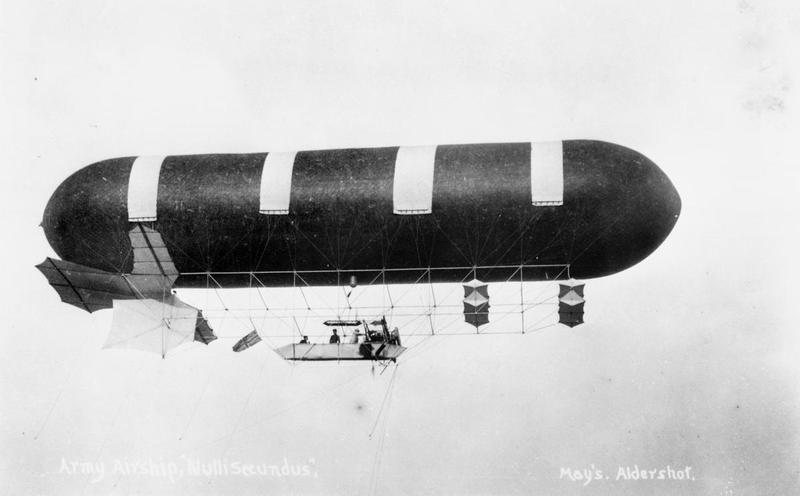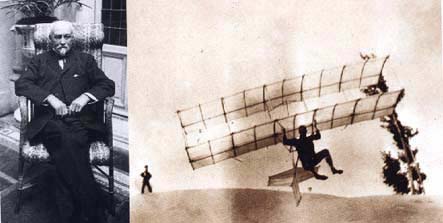|
Claims To The First Powered Flight
Several aviators have been claimed as the first to fly a powered aeroplane. Much controversy has surrounded these claims. It is generally accepted today that the Wright brothers were the first to achieve sustained and controlled powered flight. Brazil claims it own native citizen Alberto Santos-Dumont as the first successful aviator, discounting the Wrights because their ''Wright Flyer, Flyer'' took off from a rail and would sometimes even employ a catapult. An editorial in the 2013 edition of ''Jane's All the World's Aircraft'' supported the claim of Gustave Whitehead. Claims by, or on behalf of, other pioneers such as Clement Ader have also been put forward from time to time. Significant claims Several aviators or their supporters have laid claim to the first manned flight in a powered aeroplane. Claims that have received significant attention include: * Clément Ader in the ''Avion III'' (1897) * Gustave Whitehead in his No's. ''21'' and ''22'' aeroplanes (1901–1903) * Richard ... [...More Info...] [...Related Items...] OR: [Wikipedia] [Google] [Baidu] |
Kress Drachenflieger
__NOTOC__ The Kress ''Drachenflieger'' (German: "Dragon-flier") was an experimental aircraft constructed in Austria-Hungary in 1901. While taxiing trials proved successful, the aircraft lacked sufficient power to fly, and was wrecked in the course of testing on 3 October. It was built by Wilhelm Kress with the assistance of a 5,000- krone grant from Emperor Franz JosefGregorat 2007 in an attempt to create the first heavier-than-air flying machine. The aircraft was constructed as a large, open-truss structure of steel tubing with three sets of wire-braced monoplane wings placed in tandem along its length. The sets of wings were placed at uneven heights with respect to the major axis of the aircraft to prevent aerodynamic interference between them.''Scientific American'' 137 The undercarriage consisted of two aluminium pontoons with hardened keels, intended to allow the Drachenflieger to take off from and land on water or ice. Three rudders were linked to a common control stick and ... [...More Info...] [...Related Items...] OR: [Wikipedia] [Google] [Baidu] |
Scientific American
''Scientific American'', informally abbreviated ''SciAm'' or sometimes ''SA'', is an American popular science magazine. Many famous scientists, including Albert Einstein and Nikola Tesla, have contributed articles to it. In print since 1845, it is the oldest continuously published magazine in the United States. ''Scientific American'' is owned by Springer Nature, which in turn is a subsidiary of Holtzbrinck Publishing Group. History ''Scientific American'' was founded by inventor and publisher Rufus Porter (painter), Rufus Porter in 1845 as a four-page weekly newspaper. The first issue of the large format newspaper was released August 28, 1845. Throughout its early years, much emphasis was placed on reports of what was going on at the United States Patent and Trademark Office, U.S. Patent Office. It also reported on a broad range of inventions including perpetual motion machines, an 1860 device for buoying vessels by Abraham Lincoln, and the universal joint which now can be found ... [...More Info...] [...Related Items...] OR: [Wikipedia] [Google] [Baidu] |
Whitehead Woodcut
Whitehead may refer to: * Whitehead, a blocked sweat/sebaceous duct of the skin known medically as a closed comedo. * Whitehead (bird), a small species of passerine bird, endemic to New Zealand. * Whitehead building, heritage listed residence of the principal of the University of Adelaide's Lincoln College. * Whitehead (patience), a patience game related to Klondike. * Whitehead (surname), a surname. * Whitehead torpedo, the first effective self-propelled torpedo, invented by Robert Whitehead in 1866. * Whiteheads, another name for the wheat disease take-all. * USS ''Whitehead'' (1861–1865), American Civil War, 136-ton screw steam gunboat. Places * Canada: ** The Rural Municipality of Whitehead, Manitoba ** Whitehead, Nova Scotia, on Tor Bay * Hong Kong ** Whitehead, Hong Kong, a cape at Wu Kai Sha * Northern Ireland ** Whitehead, County Antrim, a small town in Northern Ireland * United States: ** Cape Whitehead, Cumberland County, Maine 43.3844N 70.1131W ** Lake Whitehead re ... [...More Info...] [...Related Items...] OR: [Wikipedia] [Google] [Baidu] |
Ader Avion III
The ''Avion III'' (sometimes referred to as the ''Aquilon'' or the ''Éole III'') was a steam-powered aircraft built by Clément Ader between 1892 and 1897, financed by the French War Office. Retaining the same bat-like configuration of the '' Éole'', the ''Avion III'' was equipped with two engines driving two propellers. While the earlier aircraft had no means of directional control at all, this one was equipped with a rudder. Trials began at the Satory army base near Versailles on 12 October 1897, with the aircraft taxiing along a circular track. On 14 October 1897, it took off but turned halfway around and then stopped. Later in his life, Ader claimed that there had been a flight of 100 m (328 ft) on this day, and said he had two witnesses to confirm it. Regardless, the French military was unimpressed with the demonstration and cancelled any further funding. The machine is preserved at the ''Musée des Arts et Métiers'' in Paris. It underwent extensive restor ... [...More Info...] [...Related Items...] OR: [Wikipedia] [Google] [Baidu] |
London
London is the capital and largest city of England and the United Kingdom, with a population of just under 9 million. It stands on the River Thames in south-east England at the head of a estuary down to the North Sea, and has been a major settlement for two millennia. The City of London, its ancient core and financial centre, was founded by the Romans as '' Londinium'' and retains its medieval boundaries.See also: Independent city § National capitals The City of Westminster, to the west of the City of London, has for centuries hosted the national government and parliament. Since the 19th century, the name "London" has also referred to the metropolis around this core, historically split between the counties of Middlesex, Essex, Surrey, Kent, and Hertfordshire, which largely comprises Greater London, governed by the Greater London Authority.The Greater London Authority consists of the Mayor of London and the London Assembly. The London Mayor is distinguished fr ... [...More Info...] [...Related Items...] OR: [Wikipedia] [Google] [Baidu] |
Science Museum, London
The Science Museum is a major museum on Exhibition Road in South Kensington, London. It was founded in 1857 and is one of the city's major tourist attractions, attracting 3.3 million visitors annually in 2019. Like other publicly funded national museums in the United Kingdom, the Science Museum does not charge visitors for admission, although visitors are requested to make a donation if they are able. Temporary exhibitions may incur an admission fee. It is one of the five museums in the Science Museum Group. Founding and history The museum was founded in 1857 under Bennet Woodcroft from the collection of the Royal Society of Arts and surplus items from the Great Exhibition as part of the South Kensington Museum, together with what is now the Victoria and Albert Museum. It included a collection of machinery which became the ''Museum of Patents'' in 1858, and the ''Patent Office Museum'' in 1863. This collection contained many of the most famous exhibits of what is now t ... [...More Info...] [...Related Items...] OR: [Wikipedia] [Google] [Baidu] |
Glenn Curtiss
Glenn Hammond Curtiss (May 21, 1878 – July 23, 1930) was an American aviation and motorcycling pioneer, and a founder of the U.S. aircraft industry. He began his career as a bicycle racer and builder before moving on to motorcycles. As early as 1904, he began to manufacture engines for airships. In 1908, Curtiss joined the Aerial Experiment Association, a pioneering research group, founded by Alexander Graham Bell at Beinn Bhreagh, Nova Scotia, to build flying machines. Curtiss won a race at the world's first international air meet in France and made the first long-distance flight in the U.S. His contributions in designing and building aircraft led to the formation of the Curtiss Aeroplane and Motor Company, which later merged into the Curtiss-Wright Corporation. His company built aircraft for the U.S. Army and Navy, and, during the years leading up to World War I, his experiments with seaplanes led to advances in naval aviation. Curtiss civil and military aircraft were some ... [...More Info...] [...Related Items...] OR: [Wikipedia] [Google] [Baidu] |
John Edward Capper
Major-General Sir John Edward Capper (7 December 1861 − 24 May 1955) was a senior officer of the British Army during the late nineteenth and early twentieth century who served on the North-West Frontier of British India, in South Africa and during the First World War, where he was instrumental in the development of the tank. He was the older brother of Major-General Thompson Capper, who was killed in action at the Battle of Loos in late 1915. An experienced engineer, Capper was involved in numerous building projects during his years in India and pioneered the development of airships in Britain. He helped establish and command several military training establishments in Britain, was involved in large-scale military planning during 1918 and 1919 and was pivotal in establishing the tank as an important feature of the British Army. Although Capper was sometimes described as pompous and possessing poor communication skills, earning the nickname "Stone Age" for his attitude towar ... [...More Info...] [...Related Items...] OR: [Wikipedia] [Google] [Baidu] |
Octave Chanute
Octave Chanute (February 18, 1832 – November 23, 1910) was a French-American civil engineer and aviation pioneer. He provided many budding enthusiasts, including the Wright brothers, with help and advice, and helped to publicize their flying experiments. At his death he was hailed as the father of aviation and the initial concepts of the heavier-than-air flying machine. Biography Born in Paris, Chanute was the son of Elise and Joseph Chanut, professor at the Collège de France. He emigrated with his father to the United States of America in 1838, when the former was named Vice-President at Jefferson College in Louisiana. Octave attended private schools in New York. Civil engineer (railroads) Octave Chanute began his training as a budding civil engineer in 1848. He was widely considered brilliant and innovative in the engineering profession. During his career he designed and constructed the United States two biggest stockyards, Chicago Stock Yards (1865) and Kansas City ... [...More Info...] [...Related Items...] OR: [Wikipedia] [Google] [Baidu] |
Northeast Texas Rural Heritage Museum August 2015 32 (Ezekiel Airship)
The points of the compass are a set of horizontal, radially arrayed compass directions (or azimuths) used in navigation and cartography. A compass rose is primarily composed of four cardinal directions—north, east, south, and west—each separated by 90 degrees, and secondarily divided by four ordinal (intercardinal) directions—northeast, southeast, southwest, and northwest—each located halfway between two cardinal directions. Some disciplines such as meteorology and navigation further divide the compass with additional azimuths. Within European tradition, a fully defined compass has 32 'points' (and any finer subdivisions are described in fractions of points). Compass points are valuable in that they allow a user to refer to a specific azimuth in a colloquial fashion, without having to compute or remember degrees. Designations The names of the compass point directions follow these rules: 8-wind compass rose * The four cardinal directions are north (N), east (E) ... [...More Info...] [...Related Items...] OR: [Wikipedia] [Google] [Baidu] |





